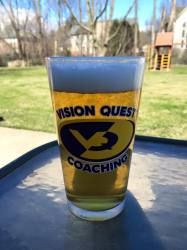Any sports nutrition book worth its salt will make some mention of the importance of proper hydration strategies for optimal athletic performance. This typically amounts to several factors which are multiplied together to tell you how much total fluid you need to consume. Some equations are more elaborate, requiring you to weigh yourself before and after workouts to determine sweat rates and thus allowing you to pinpoint exactly what your hourly hydration goals should be.
Commercial energy drink manufacturers also often provide recommendations for how much should be consumed prior to, during and following exercise, but when you start looking at the actual volume of fluid required, it can be a little staggering. Laboratory data can be provided that shows the specific benefits of consuming a specific quantity of fluid, energy or both.
However, it turns out that these strategies are not always practical in all athletic situations, leaving the athletes who are anxious to perform at their best wondering what to do. Like nutrition, there are not necessarily hard and fast rules of hydration that apply to all individuals, but rather general guidelines that can be used as a starting point to form your personal hydration strategy. Even if a strategy doesn’t work for you right away, don’t give up on it immediately, as it is often possible for your body to adapt to things over time.
One of the most commonly cited hydration recommendations is 4-8 oz of fluid every 15 minutes. Since most water bottles have a capacity of 21-28 oz, this amounts to essentially one bottle each hour. It may be possible to get by with less for short workouts (<3 hrs) because there may not be enough time to be severely impaired by a slight negative fluid balance.
During a longer workout or event, it becomes more important to stick to this guideline because of the greater potential for dehydration. In warmer weather or for heavy sweaters, it is prudent to try to increase fluid ingestion along with electrolyte replacement. The same goes for indoor training, where sweat losses are increased due to the hot climate and lack of circulation. It is equally important to stay on top of your hydration in cold weather since you are still losing a lot of moisture through your breathing. Some form of energy in the bottle is typically recommended for intense exercise or sessions lasting longer than 90 minutes, but you must also look at energy concentration. Too many calories (especially if consuming solid food along with energy drinks) can impair stomach emptying, which in turn impairs hydration. Even worse, when all the food and fluid start to accumulate in the stomach, it can lead to severe discomfort, which slows you down even more.
In closing, different endurance events place a variety of complications on your hydration strategies. The two events where it is easiest to stick to your strategy are century rides and triathlon, because the effort is within your control, or at least mostly predictable, plus there are usually several aid stations along the course. Hydration and nutrition strategies can be prepared in training and implemented during the race. Mountain biking and mass-start road racing make things a little more challenging because the technical nature of the race course and the intensity of the competition at the time you want to drink may prevent you from being able to remove a hand from the bars. In this situation, you may be best served to take in a big volume of fluid whenever you have the chance in case it’s a longer than expected before you’re able to get more in. Having some energy in your bottle is also a good idea because it takes less time to get it in and is easier to digest than trying to retrieve, open, chew and swallow solid food. Time trials and cyclocross present a unique challenge: in the former it is often advised to minimize unnecessary movement for the sake of maintaining the aero position, while cross frames typically have the bottle cages removed to make the bike easier to shoulder. Both types of races are typically short, but at very high intensity, meaning body temperature increases and fluid loss through breathing is accelerated. Although you may not “need” fluid during these short events, proper hydration prior to and following time trials and cyclocross races remains as important, if not more so, than for longer events.

